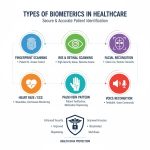The Global Seed Market: Cultivating Growth in Modern Agriculture
Key Takeaways
- The global seed market reached USD 67.09 million in 2022 and is projected to grow to USD 111.03 million by 2030, representing a CAGR of 6.50%
- Rising global population and food security concerns are primary drivers of market expansion
- Asia-Pacific regions, particularly China and India, are experiencing unprecedented demand for quality seeds
- Technological innovations in seed development, including genetic engineering and biotechnology, are reshaping the industry
- Counterfeit seeds and regulatory challenges pose significant obstacles to market growth
- Investment in research and development continues to accelerate, focusing on climate-resilient varieties
- The integration of sustainable and organic seed production methods is becoming increasingly important
Overview of Global Seed Market Growth
The Global Seed Market stands at the foundation of agricultural productivity and food security worldwide. With a valuation of USD 67.09 million in 2022 and projections reaching USD 111.03 million by 2030, the industry demonstrates robust growth potential driven by multiple converging factors. This remarkable compound annual growth rate of 6.50% reflects not merely numerical expansion but a fundamental transformation in how the world approaches agricultural production.
Seeds represent the genesis of agricultural value chains, serving as the primary input that determines crop yield, quality, and resilience. Their importance extends far beyond simple planting material; modern seeds embody decades of scientific research, genetic improvement, and technological innovation. The market’s expansion correlates directly with global efforts to enhance food production efficiency while addressing challenges posed by climate change, soil degradation, and water scarcity.
The significance of seeds in contemporary agriculture cannot be overstated. They serve as vehicles for introducing beneficial traits such as drought tolerance, pest resistance, and enhanced nutritional content into crop populations. This technological sophistication has transformed seeds from mere biological entities into sophisticated agricultural inputs that can significantly impact farm productivity and profitability. The market’s growth trajectory reflects increasing recognition of seeds as strategic assets in ensuring food security for a growing global population expected to reach 9.7 billion by 2050.
Several interconnected factors drive this market expansion. The intensification of agricultural practices in developing nations, coupled with the modernization of farming techniques in established agricultural economies, creates sustained demand for high-quality seeds. Additionally, the diversification of seed applications beyond traditional food production into areas such as biofuels, pharmaceuticals, and industrial applications opens new revenue streams and market opportunities.
Market Drivers and Challenges
The global seed market’s expansion is fundamentally linked to demographic trends and evolving consumption patterns. With the world population increasing by approximately 80 million people annually, the pressure on agricultural systems to produce more food from limited arable land intensifies. This demographic reality translates into consistent demand for seeds that can deliver higher yields, better nutritional profiles, and enhanced resistance to environmental stresses.
The quest for high-quality seed varieties has become a central focus for farmers worldwide. Modern agricultural operations increasingly recognize that seed selection represents one of the most critical decisions affecting crop success. Premium seeds offering specific traits such as herbicide tolerance, insect resistance, or improved nutritional content command higher prices but deliver superior returns through increased yields and reduced input costs. This value proposition drives farmers to invest in quality seeds despite higher initial costs, supporting market growth and encouraging continued innovation in seed development.
Climate change adds another layer of complexity to market dynamics. Shifting weather patterns, increased frequency of extreme events, and changing pest and disease pressures necessitate continuous adaptation in seed varieties. Farmers seek seeds capable of performing under variable conditions, driving demand for stress-tolerant varieties that can maintain productivity despite environmental challenges. This climate-driven demand creates opportunities for seed companies investing in research and development of resilient varieties.
However, the market faces significant challenges that could impede growth trajectories. The proliferation of counterfeit seeds represents a serious threat to both market integrity and agricultural productivity. These substandard products not only cause economic losses for farmers but also undermine confidence in legitimate seed suppliers. The challenge is particularly acute in developing markets where regulatory enforcement may be limited and farmers may lack resources to verify seed authenticity.
Regulatory complexities present additional hurdles. The seed industry operates within a complex web of national and international regulations governing everything from genetic modification to intellectual property rights. Navigating these regulatory frameworks requires substantial resources and expertise, potentially limiting market entry for smaller players and slowing the introduction of innovative products. The varying regulatory standards across different countries create additional complications for companies seeking to operate in multiple markets.
Segmentation of Seed Market
The global seed market exhibits remarkable diversity in its segmentation, reflecting the varied needs of different agricultural systems and crop types. Classification by seed type reveals distinct market segments, each with unique characteristics and growth trajectories. Conventional seeds, which form the traditional backbone of agriculture, continue to dominate in many regions, particularly where genetically modified organisms face regulatory restrictions or consumer resistance. These seeds, improved through traditional breeding methods, offer reliability and acceptance across diverse markets.
Genetically modified seeds represent a technologically advanced segment experiencing significant growth in markets where regulatory frameworks permit their use. These seeds, engineered to express specific traits such as insect resistance or herbicide tolerance, have revolutionized agricultural practices in major producing countries. The adoption patterns vary significantly by region and crop, with certain crops like soybeans and corn showing particularly high GM adoption rates in countries such as the United States, Brazil, and Argentina.
Hybrid seeds occupy a crucial middle ground, offering enhanced vigor and uniformity through controlled cross-breeding. The hybrid seed segment has shown consistent growth across both developed and developing markets, driven by their superior performance characteristics and the need for farmers to purchase new seeds each season. This recurring demand creates stable revenue streams for seed companies while ensuring farmers access to consistent, high-performing varieties.
Seed treatments and traits add another dimension to market segmentation. Modern seeds often come pre-treated with fungicides, insecticides, or biological agents that protect young plants during critical early growth stages. The integration of multiple traits within single seed varieties, known as trait stacking, has become increasingly common, offering farmers comprehensive solutions to multiple agricultural challenges within a single seed product.
Regional market analysis reveals distinct patterns of seed adoption and preferences. Asia-Pacific markets, driven by large populations and intensifying agricultural practices, show strong demand across all seed categories. North American and European markets demonstrate high adoption of advanced seed technologies, while African and Latin American markets present significant growth opportunities as agricultural modernization accelerates. Each region’s unique combination of crops, farming practices, regulatory environments, and economic conditions creates distinct market dynamics requiring tailored approaches from seed companies.
Key Players in the Seed Market
The global seed market is characterized by the presence of several dominant players who have shaped industry development through substantial investments in research, strategic acquisitions, and global distribution networks. Companies such as Bayer (following its acquisition of Monsanto), Corteva Agriscience, Syngenta, and BASF command significant market shares through their comprehensive seed portfolios and integrated agricultural solutions. These industry leaders have established their positions through decades of investment in breeding programs, biotechnology research, and farmer relationships.
Innovation remains the primary competitive differentiator among major seed companies. Leading firms invest billions annually in research and development, focusing on developing varieties that address evolving farmer needs and consumer preferences. The integration of advanced technologies such as gene editing, marker-assisted selection, and high-throughput phenotyping has accelerated the pace of variety development. Companies increasingly leverage big data analytics and artificial intelligence to identify promising genetic combinations and predict variety performance across different environments.
Strategic partnerships and collaborations have become essential elements of competitive strategy in the seed industry. Major companies frequently engage in licensing agreements, joint ventures, and research collaborations to access complementary technologies and expand market reach. These partnerships often span the entire agricultural value chain, linking seed companies with equipment manufacturers, digital agriculture providers, and food processors to create integrated solutions for farmers.
The competitive landscape also includes numerous regional and specialty seed companies that serve specific market niches. These smaller players often focus on particular crops, regions, or market segments where they can leverage local knowledge and relationships. Family-owned seed companies with deep regional roots continue to play important roles in many markets, particularly in specialty crops and regions where local adaptation is crucial. The diversity of market participants ensures continued innovation and provides farmers with varied options suited to their specific needs.
Technological advancement extends beyond genetic improvement to encompass seed production, processing, and quality control. Leading companies invest in state-of-the-art seed production facilities that ensure consistent quality and purity. Advanced coating technologies, precision sizing, and quality testing protocols have become standard practices among major players, raising the bar for seed quality across the industry.
Future Trends in Seed Technology
The future of seed technology is being shaped by revolutionary advances in genetic engineering and biotechnology. Gene editing technologies, particularly CRISPR-Cas9 and its variants, are opening unprecedented possibilities for precise genetic modifications. Unlike traditional genetic modification, these new tools allow for targeted changes that can introduce beneficial traits without incorporating foreign DNA. This precision offers the potential to develop improved varieties more quickly while potentially facing fewer regulatory hurdles in markets sensitive to GMO concerns.
The convergence of genomics, phenomics, and data science is accelerating the pace of variety development. High-throughput sequencing technologies have made it feasible to analyze entire genomes quickly and cost-effectively, enabling breeders to identify beneficial genetic variants with greater precision. When combined with advanced phenotyping systems that can measure plant characteristics at scale, these technologies allow for more informed breeding decisions and faster development cycles.
Sustainable and organic seed production is experiencing remarkable growth as consumer preferences shift toward environmentally friendly agricultural practices. This trend extends beyond simply avoiding synthetic inputs; it encompasses breeding varieties specifically adapted to organic production systems. These varieties must perform well without synthetic fertilizers and pesticides, requiring different trait priorities than conventional varieties. The organic seed sector is developing its own innovation ecosystem, with specialized breeding programs focusing on traits such as competitive ability against weeds, nutrient efficiency, and natural pest resistance.
Biotechnology’s role in seed development continues to evolve beyond traditional genetic modification. New approaches include the use of beneficial microorganisms that can be applied to seeds to enhance plant growth and stress tolerance. These biological seed treatments represent a growing market segment that aligns with sustainability goals while providing tangible benefits to farmers. The integration of multiple technologies, from genetic improvement to biological enhancements, is creating seeds that function as sophisticated delivery systems for various agricultural innovations.
Climate adaptation remains a central focus of future seed development. As weather patterns become more variable and extreme events more frequent, the need for resilient varieties intensifies. Future seed technologies will likely emphasize traits that confer broad-spectrum stress tolerance rather than resistance to specific challenges. This includes developing varieties with enhanced root systems for improved water and nutrient uptake, modified photosynthetic pathways for better heat tolerance, and improved recovery mechanisms following stress events.
Regional Insights and Dynamics
The Asia-Pacific region’s dominance in the global seed market reflects the convergence of multiple factors that create ideal conditions for market expansion. Countries like China and India, with their massive populations and agricultural sectors, drive substantial demand for improved seed varieties. The region’s agricultural transformation, characterized by increasing mechanization, adoption of modern farming practices, and government support for agricultural development, creates a favorable environment for seed market growth. Small-scale farmers, who constitute the majority of agricultural producers in many Asian countries, are increasingly recognizing the value of quality seeds in improving their livelihoods.
China’s seed market presents unique dynamics, with strong government involvement in agricultural development and significant investments in domestic seed research capabilities. The country’s focus on food security has led to substantial support for seed industry development, including funding for research institutions and incentives for private sector participation. India’s market shows different characteristics, with a vibrant private seed sector serving diverse agro-ecological zones and cropping systems. The diversity of crops grown and varying farm sizes create opportunities for both large multinational companies and smaller regional players.
North America and Europe represent mature markets characterized by high adoption of advanced seed technologies and sophisticated farming operations. These regions lead in the adoption of genetically modified varieties where permitted, and farmers typically operate larger farms with access to capital for investing in premium seeds. The focus in these markets has shifted toward value-added traits such as improved nutritional profiles, processing characteristics, and sustainability attributes. Regulatory frameworks in these regions, while sometimes restrictive, provide clear pathways for innovation and protect intellectual property rights, encouraging continued investment in research and development.
Emerging markets across Africa, Latin America, and Southeast Asia present significant growth opportunities for the seed industry. These regions often combine large agricultural sectors with relatively low current adoption of improved varieties, creating substantial potential for market expansion. However, these markets also present unique challenges, including limited infrastructure, varying regulatory environments, and diverse farming systems. Successful market development in these regions requires adapted business models that address local needs and constraints while building farmer capacity and market infrastructure.
The interplay between global and local dynamics shapes regional market development. While multinational companies bring advanced technologies and global best practices, local adaptation and understanding remain crucial for success. This has led to various partnership models where global technology providers collaborate with local companies that understand regional needs and can navigate local market conditions effectively.
Investment and Research Opportunities
The seed industry continues to attract substantial investment as stakeholders recognize its fundamental role in addressing global food security challenges. Research and development investments by major seed companies have reached unprecedented levels, with leading firms allocating 10-15% of revenues to R&D activities. This investment intensity reflects the long development cycles for new varieties and the competitive importance of maintaining robust product pipelines. Beyond traditional breeding programs, investments increasingly target emerging technologies such as artificial intelligence for breeding decisions, automated phenotyping systems, and advanced biotechnology platforms.
The focus on improving crop resilience has opened new research frontiers that attract both public and private investment. Climate change adaptation requires developing varieties that can maintain productivity under variable conditions, necessitating research into complex traits controlled by multiple genes. This complexity has spurred investments in advanced breeding technologies and collaborative research platforms that can address these multifaceted challenges. Research initiatives targeting drought tolerance, heat resistance, and flooding tolerance have gained particular prominence as extreme weather events become more frequent.
Developing regions present compelling investment opportunities for seed industry growth. As agricultural modernization accelerates in these areas, demand for quality seeds increases dramatically. However, serving these markets requires adapted business models that address unique challenges such as limited farmer purchasing power, inadequate distribution infrastructure, and varying regulatory environments. Innovative approaches such as mobile-based extension services, village-level seed entrepreneurs, and flexible packaging sizes are attracting investment as companies seek to tap into these high-growth markets.
Public-private partnerships have emerged as important vehicles for advancing seed research and market development. These collaborations leverage public research capabilities and germplasm resources with private sector efficiency and market knowledge. International agricultural research centers play crucial roles in developing improved varieties for developing country conditions, often in partnership with private companies that can ensure widespread distribution and adoption. These partnerships are particularly important for crops that may not attract sufficient private investment due to limited market size or purchasing power.
The intersection of digital agriculture and seed technology creates new investment opportunities. Companies are developing integrated platforms that link seed selection with precision agriculture tools, providing farmers with data-driven recommendations for variety selection and management practices. These digital tools can help farmers optimize seed investments by matching varieties to specific field conditions and management capabilities. The data generated through these platforms also provides valuable feedback for breeding programs, creating virtuous cycles of improvement and adaptation.
☎ Contact Us:
224 W 35th St Ste 500 New York,
USA/Canada Toll Free +1(877) 462-2282
+1(212) 951-1369
✉ Email: [email protected]
🌐 Website: https://www.vantagemarketresearch.com
FAQs
- What factors are driving the growth of the global seed market?
- Which regions are showing the highest demand for seeds?
- What industries are primarily contributing to the seed market’s expansion?
- What is the projected Compound Annual Growth Rate (CAGR) of the global seed market from 2025 to 2035?
![[Market Research Reports] – Research Google News Blog | VMR.Biz](https://www.vmr.biz/wp-content/uploads/2022/12/logo-removebg-preview.png)











